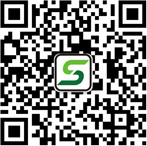Explore how DMR radio works, its core technology, and real-world applications. Learn about TDMA, DMR tiers, and why this digital protocol is revolutionizing two-way communication.
How Does DMR Radio Work?
Digital Mobile Radio (DMR) is an open digital radio standard developed by the European Telecommunications Standards Institute (ETSI). It is designed to deliver clear, efficient, and secure voice and data communication for professional and industrial users. Unlike traditional analog radios, DMR leverages digital technology to optimize spectrum usage, enhance audio quality, and enable advanced features such as text messaging and GPS tracking.
In this article, we’ll break down the fundamentals of DMR technology, explain its operational tiers, and highlight its advantages over conventional analog systems.
Core Technology Behind DMR
DMR operates using a Two-Slot Time Division Multiple Access (TDMA) protocol. This means a single 12.5 kHz channel is split into two alternating time slots, effectively allowing two simultaneous conversations or data transmissions on the same frequency. By doubling capacity without requiring additional bandwidth, DMR addresses spectrum scarcity while maintaining backward compatibility with analog systems.
Here’s a simplified breakdown of the process:
1. Voice Digitization: When a user speaks into a DMR radio, the analog voice signal is converted into digital data using an Advanced Multi-Band Excitation (AMBE) codec.
2. Channel Encoding: The digital data is organized into frames, with error correction codes added to minimize signal loss or interference.
3. TDMA Transmission: The data is transmitted in alternating time slots (Slot 1 and Slot 2), synchronized across the network.
4. Reception and Decoding: The receiving radio reconstructs the digital data back into audible sound, filtering out noise for crystal-clear audio.
This digital framework ensures reliable communication even in noisy environments like construction sites or factories.
DMR Tiers: Tier I, II, and III
DMR is categorized into three tiers, each serving different use cases:
1. Tier I (Unlicensed):
- Designed for personal or low-power applications.
- Operates in the license-free spectrum, making it ideal for recreational users.
- Limited to simplex communication (direct radio-to-radio).
2. Tier II (Conventional Licensed):
- The most widely adopted tier for business and industrial applications.
- Requires a license and supports both simplex and repeater use.
- Enables features like group calls and text messaging.
3. Tier III (Trunked Systems):
- Suited for large-scale, multi-site networks (e.g., public safety or utilities).
- Uses trunking to dynamically allocate channels across multiple groups.
- Supports advanced data applications and network management.
Key Features of DMR Radios
1. Enhanced Audio Quality:
Digital processing eliminates background noise, ensuring voices remain clear over long distances.
2. Extended Battery Life:
Since TDMA radios transmit intermittently (one slot at a time), power consumption is reduced by up to 40%.
3. Integrated Data Services:
DMR supports SMS, GPS location tracking, and telemetry, enabling real-time monitoring and control.
4. Interoperability:
As an open standard, DMR devices from different manufacturers can operate on the same network.
Real-World Applications
DMR is widely used in sectors where reliable communication is critical:
- Public Safety: Police, fire, and EMS teams use Tier III systems for coordinated responses.
- Manufacturing: Factories deploy DMR for seamless team communication and machinery monitoring.
- Transportation: Logistics companies track fleets and manage dispatches efficiently.
- Event Management: Large venues rely on DMR for staff coordination during concerts or sports events.
DMR radio represents a leap forward in two-way communication, combining spectral efficiency, superior audio, and versatile data services. By understanding its underlying technology—TDMA, digital encoding, and tiered architecture—users can fully leverage its potential across industries. Whether for personal use or large-scale operations, DMR continues to set the standard for modern radio communication.
Embrace the digital revolution and experience the clarity, efficiency, and reliability of DMR.



